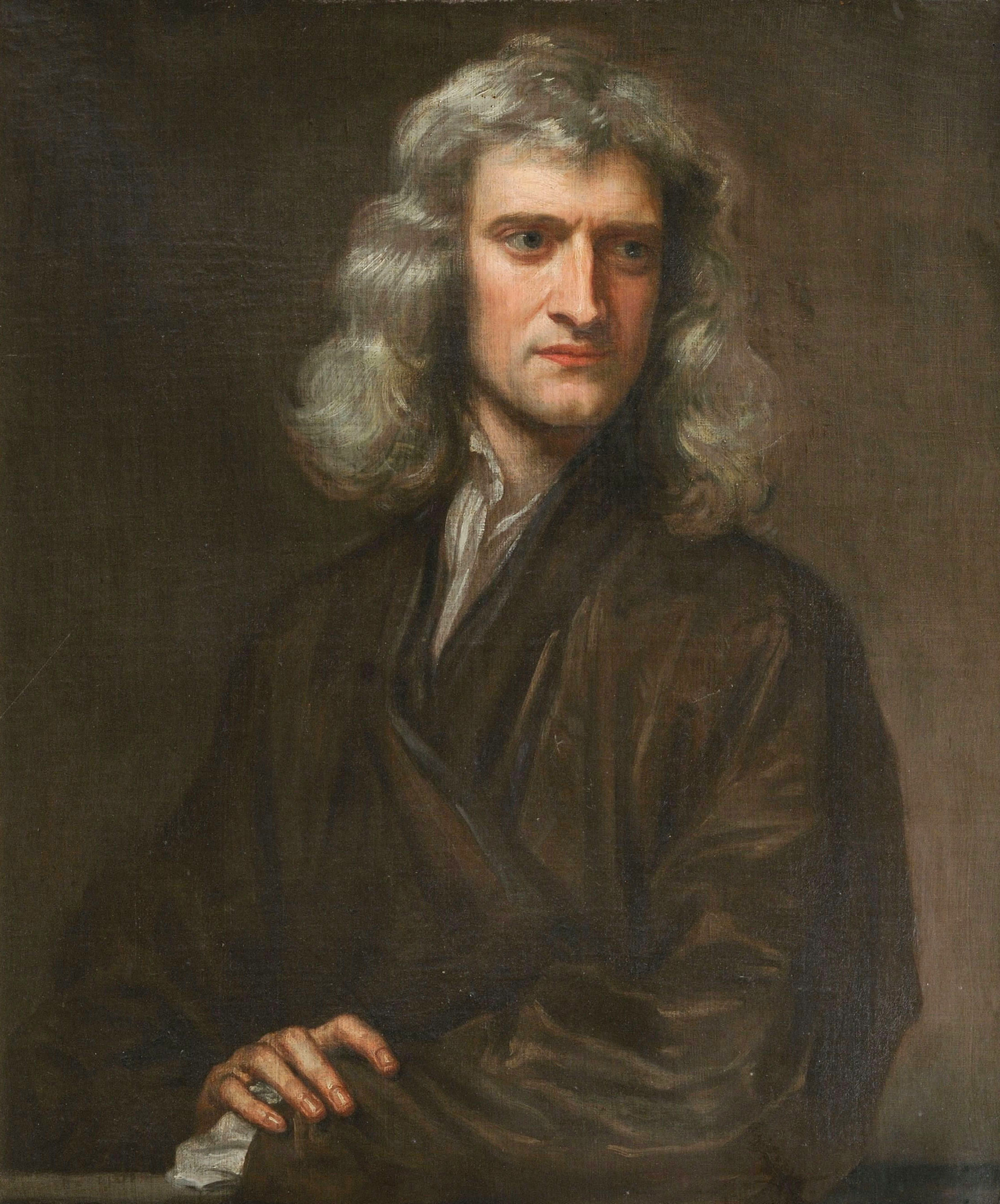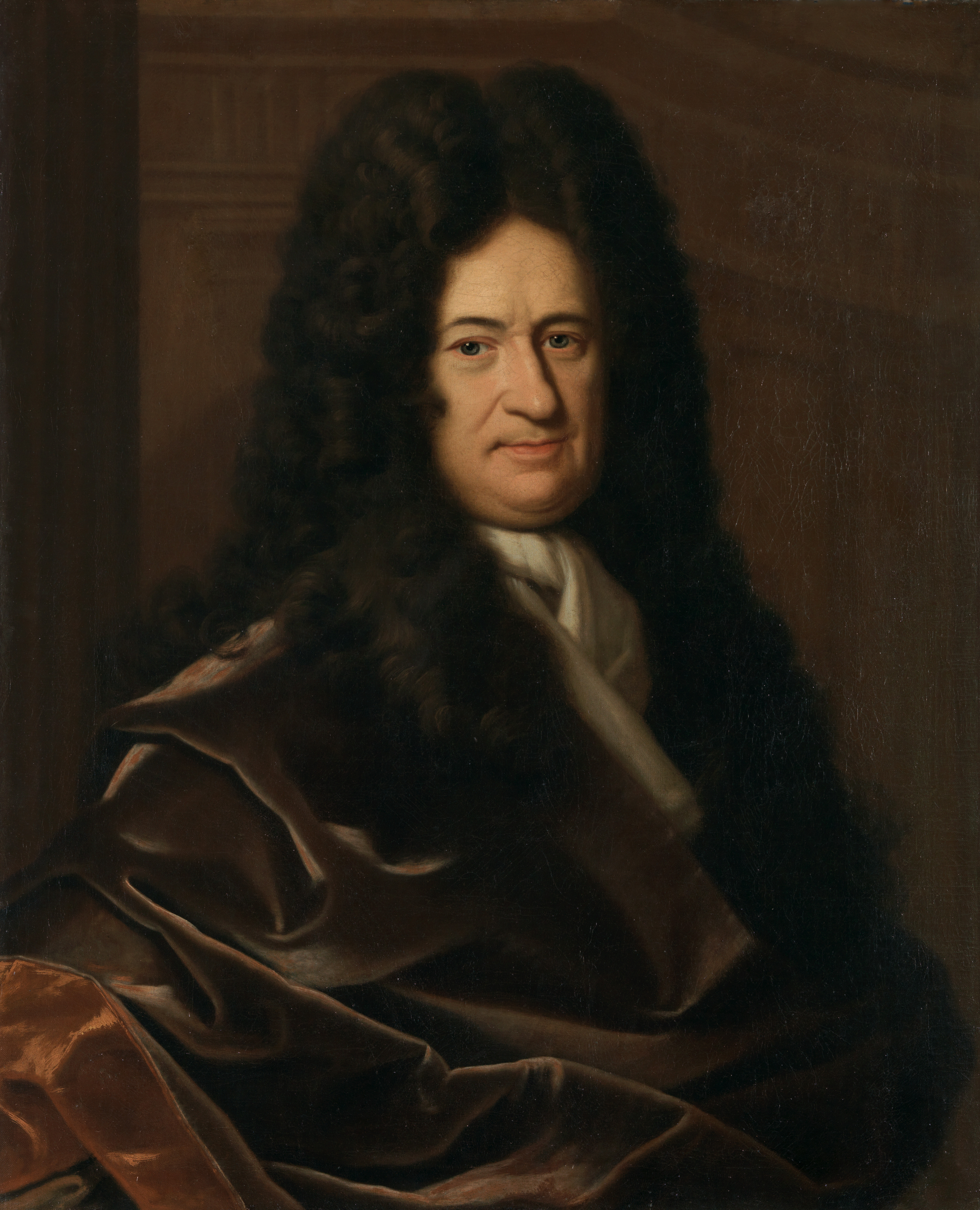Find another contribution to science and mathematics attributed to Newton.
Section 3.2 Newton vs Leibniz
Subsection 3.2.1 Introduction
Calculus is arguably the greatest human discovery of all time. With calculus, we have significantly increased our understanding of classical physics, electromagnetism, population dynamics, and astronomy. Every text message you send was made possible through calculus. Every time you take a Tylenol, pump your car breaks, or listen to the radio, you are expierencing gifts of calculus. Applications of calculus affect our daily lives in profound ways.
The calculus we have today packaged in nice textbooks is due to the hard work and incredible insight of a lot of incredibly impressive people. Famous mathematicians like Fermat, Descartes, and Archimedes all laid ground work for modern calculus, but the lion’s share of the credit often goes to two giants in the mathematical world: Sir Isaac Newton and Gottfried Leibniz.
And the story of Newton and Leibniz is not without controversy.
Subsection 3.2.2 Newton
Considered to be one of the three greatest mathematical minds of all time, Sir Isaac Newton (1643-1727) expressed a generational talent for science and mathematics. He is referred to as a "supreme genius" and was England’s champion of science.
Newton is accredited with
-
discovering the three laws of motion
-
discovered gravitational force, validating Kepler’s laws of planetary motion AND the Copernican model of the solar system.
-
the potent mathematical tool known as calculus.
Question 3.2.1. More Contributions.

Question 3.2.3. Newton’s Inventions.
Newton also is known for several inventions. Do a quick internet search to list two of them.
Subsection 3.2.3 Leibniz
Just because you’re not a generational super genius like Isaac Newton does not mean that you cannot make significant contributions to the scientific community. During the time of Newton, German mathematician Gottfried Wilhelm Leibniz (1646-1716), also developed calculus. More than that, Leibniz is known for his contributions to philosophy, ethics, politics, and library organizational systems.

Actually, Leibniz also developed today’s standard notation for derivatives and integrals, and his approach to the subject more closely resembles what we do today over Newton’s calculus.
Not only that, Leibniz developed our understanding of base-2 number systems: binary. At the machine level, computers operate through binary mathematics. We can thank Leibniz for that.
Subsection 3.2.4 The Calculus Controversy
Who should get credit for the discovery of modern calculus? You might think it would be easy to share credit, but that is not the way European nations thought of things in the 17th century. Calculus’ discovery became a huge source of conflict, and this conflict quickly pitted Newton and Leibniz against each other.
Gotthegist’s YouTube video, "The Calculus Controversy", tells this story well. Watch the video and answer the following questions.
Question 3.2.10.
Who ran a smear campaign in the quest to get credit for campus? Was it successful?
Thankfully, the world has mostly moved on from the drama of the origins of calculus. We can simply enjoy the fruit of their labor. Regardless of the story, we should be thankful that Newton and Leibniz both get credit today.
